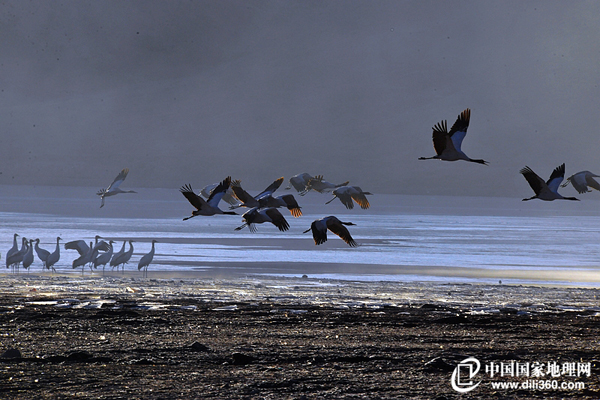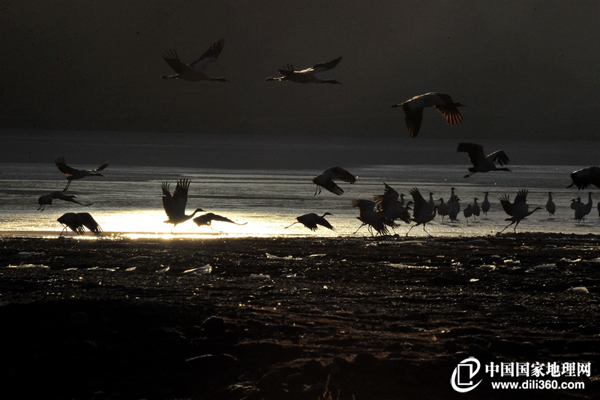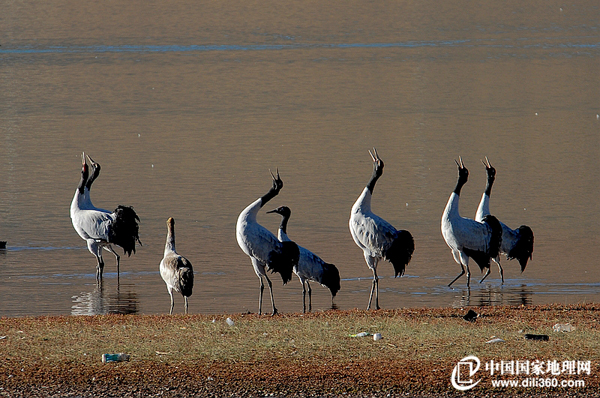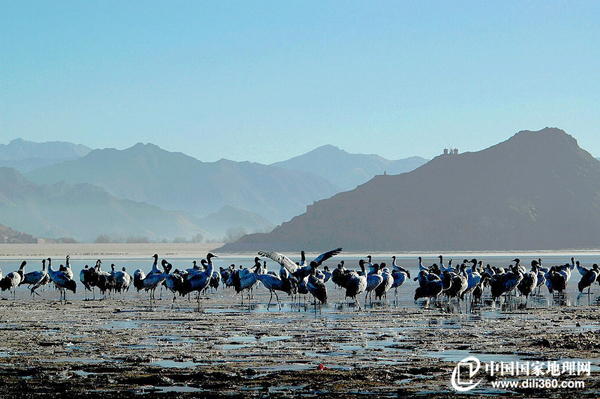
Lhasa River is one of the places where black-necked cranes winter. [Photo/ dili360]
The Black-necked Crane is the only crane living on the plateau, and one of the wild animals under the first class protection of state level. China's Tibet Autonomous Region is its main habitat. The number of the crane there has reached over 8,000, accounting for three-quarters of the global total. Their main habitats are the lake and wetlands in the northern Tibet and around the Yarlung Zangbo River. Lhasa River is one of the places where black-necked cranes winter. In late October each year, a large number of black-necked cranes would fly to the Valley of Lhasa River and spend over five months there. A photographer who loves birds objectively recorded the Black-necked Crane's living conditions there, which, to a certain degree, relieves many people who concern about the impact of human beings and environment on the bird.
Camping of Black-necked cranes

Camping of Black-necked cranes [Photo/ dili360]

Camping of Black-necked cranes [Photo/ dili360]

Camping of Black-necked cranes [Photo/ dili360]
Black-necked cranes would choose the shoal beside waters with broad vision to pass the night. At the site, there are about 500 to 600 birds. with water flowing slowly beneath their feet, most of the crane fall asleep except those guards who would keep look around. Sometimes some cranes that awake from their dream would tweet for a few times and then fall asleep soon. When the morning comes, they woke up and greeting each other with tweeting. Without man-made disturbing, some of them would get up early and fly away with their families. In the bitter cold of winter, most of the cranes would choose to sleep late in the morning. To about 9 or 10 o'clock, the cranes would be so hungry to sleep on and they fly away continuously, and to about 10:30, almost all the cranes fly away.
